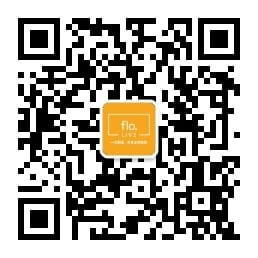Page Contents
Welcome to the era of software-defined IoT connectivity

Page Contents
IoT organizations need to access seamless, cloud-based network solutions for IoT connectivity on a global scale in order to reach their targets of hyper-scale device deployments. Nir Shalom, the chief executive of floLIVE, tells Robin Duke-Woolley, the chief executive of Beecham Research, that control of the technology stack, the connectivity and the data from end-to-end is vital to provide the connections customers with the simplicity of management, a ubiquitous global footprint and access to the network technology of their choice.
Robin Duke-Woolley: You were previously in a senior position at AT&T, why did you leave there to join floLIVE?
Nir Shalom: I saw three things coming together with floLIVE. Firstly, a product market fit that made a lot of sense to me with an immediate understanding of the problem that the company was trying to solve and how the solution met that need. I have seen many start- ups while at AT&T – and with many I could see that they had an interesting idea but it didn’t really meet a specific need. With floLIVE I saw a company with an intelligent vision, one that makes sense and solves problems for real customers. Secondly, I noticed that floLIVE, unlike many of the companies in this specific field of global connectivity and networking solutions for IoT, owns the entire stack of technology that is required to build a solution from A to Z. This is very important. We talk about the market and we talk about technology but to really be able to serve customers in a valuable way you need to control the technology stack. floLIVE has all the pieces in place to do this. The third thing comes down to the company culture and passion. I came across a set of founders who truly understand the market and have a great vision and are great people to work with.
RD-W: So, what exactly does floLIVE offer?
NS: From a customer perspective, we see a lot of manufacturers that would like to move up the value chain and keep in touch with their devices throughout the product lifecycle. Manufacturers understand that to improve their market position and provide the best customer service, their products need to work properly at all times, and the only way to do that is to control the technology stack, the connectivity and the data. Many customers want this globally and to have it provided in a simple way. At present, global manufacturers have two options. The first option is to go with a global subscriber identification module (SIM) from one operator, which results in vendor-lock in. That operator may have permanent roaming issues, it may not be sufficiently secure in each country when roaming, and you may want to build a relationship with another operator and be unable to explore that.
The second option is to integrate with multiple operators. However, while integrating with one operator is complex enough, integrating with several gets even more complicated and confusing. Each have their own different platforms, support systems and ways of doing things.
What we offer is a global, cloud-based and software-driven connectivity and networking solution for IoT that allows such manufacturers to connect their devices anywhere in the world reliably and manage them simply using a set of REST APIs or a simple graphical user interface (GUI). Our technology allows us to support any cellular technology from 3G and LTE, to NB-IoT, LTE-M and 5G.
Our unique architecture is achieved by deploying a set of core networks developed from the ground up in various regions worldwide. We then interconnect all of these networks into a global powerful IoT platform. We implement our cloud-based, core mobile network in different regions of the world and we partner with local connectivity providers – local mobile network operators (MNOs). We buy the local connectivity from them and then offer our customers the connectivity with one single API, one single interface, one single bill worldwide plus all the facilities to make that work– provisioning, activation and others. We reduce all that complexity down into real simplicity.
RD-W: Do you use eSIM?
NS: Definitely. We encourage the use of embedded SIM (eSIM). We support both the standard as well as our own method that provides more efficiency. Customers can choose either. We also support softSIM initiatives. In fact, we support all new and existing SIM initiatives. It’s really all about what the customer needs. Sometimes the standard method will work best. Other times, the standard method is expensive for certain use cases. In such cases, we can offer a more proprietary solution that is more cost effective.
RD-W: What makes floLIVE different?
NS: Our architectural and technology approach is unique: Firstly, we build our own technology and 4G/5G core mobile network to specifically address the large variety of IoT use-cases, such as NB-IoT/CAT-M on one hand and high throughput use cases on the other. Secondly, we implement it in various locations worldwide to build a unique 4G/5G IoT-dedicated network that takes advantage of a modern cloud-based solution. This kind of approach is taken to provide an optimised IoT solution for our customers from a performance and security perspective, as well as providing seamless control, compliance and management. The vast majority of the platforms on the market primarily deal with data management and the ability to build vertical sector applications on top. We are less focused on that. We provide a seamless, cloud-based network solution for IoT connectivity on a global scale, and we provide both networking and device management. We can do this in a really flexible way because we have the whole may want a dedicated global network for example. Within this, its devices are connected to a private network slice and the slice will be dedicated for this specific customer alone.
RD-W: Is that network slicing specific to 4G and potentially 5G?
NS: Our technology is fully 4G compliant, and soon our global network will be migrated to support 5G, too. This global LTE/5G network provides the slicing capabilities to our customers as mentioned above. We do not deal with network slicing on the radio access network itself. We do network slicing on all of the logical parts of the network – the evolved packet core (EPC) level of the core network itself. We use our own core network, with the radio access networks from the MNOs. Controlling the technology and network topology also allows us to expand our cloud- based network to a customer premises if needed, to provide a unique solution.
RD-W: Are there other unique elements in floLIVE?
NS: Yes, there are several. Let me describe one more in brief. We call this, software- defined connectivity (SDC). IoT solutions are suffering from a lot of friction – lots of things need to come together for a solution to work. SDC provides the ability to consume the services with REST APIs ormicro-services.When building a complete IoT solution, connectivity is a big part of that. SDC empowersthecustomertouseourentireset of capabilities managed via a simple set of APIs or microservices that you can consume andbuildaspartofyourbroaderIoTsolution. To do that, you need to abstract all the telco complexities into something that application developers can integrate in an easy way, as simpleasbuildingblocks.Thatisavery powerful offering for application developers.

Join Our Newsletter
Get the latest tips and insights in our monthly newsletter.








